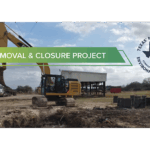
Phase 1 Environmental Site Assessments (ESAs) play a pivotal role in identifying potential environmental risks and liabilities associated with a property. In Mansfield, these assessments are essential for various purposes, including real estate transactions and environmental risk management. Understanding the purpose, process, and legal considerations of Phase 1 Assessments is crucial for all stakeholders involved. This article will delve into these aspects, highlighting their significance in Mansfield’s context.
Understanding the Purpose of Phase 1 Environmental Site Assessments
Phase 1 Assessments serve as a critical tool for environmental risk management. They aim to evaluate the potential presence of hazardous substances or petroleum products on a property, as well as identify any existing or potential environmental liabilities. These assessments are typically conducted prior to property transactions or as part of due diligence processes.
The Role of Phase 1 Assessments in Environmental Risk Management
Phase 1 Assessments provide vital information to stakeholders, such as property owners, buyers, lenders, and regulators, enabling them to make informed decisions regarding the property’s environmental condition. By identifying potential risks, these assessments help prevent future liabilities and protect human health and the environment.
Key Components of a Phase 1 Assessment
A Phase 1 Assessment involves a comprehensive investigation of the property, examining various factors that may pose environmental risks. Key components typically include:
- Reviewing historical property records and conducting interviews with previous owners, occupants, and neighboring property owners to gather information about past operations and potential contamination sources.
- Inspecting the property for visible signs of environmental hazards, such as underground storage tanks, asbestos-containing materials, or evidence of chemical spills.
- Assessing nearby areas for potential sources of contamination that could impact the property, such as adjacent industrial sites or underground storage tank facilities.
However, the scope of a Phase 1 Assessment goes beyond these key components. Environmental consultants also consider the geological and hydrological characteristics of the site, as well as the potential impact of natural disasters, such as floods or earthquakes. These additional factors help provide a comprehensive understanding of the property’s environmental risks.
Moreover, Phase 1 Assessments often involve the collection and analysis of soil and groundwater samples. These samples are tested for the presence of hazardous substances, such as heavy metals or volatile organic compounds, which can pose significant risks to human health and the environment. By analyzing these samples, environmental professionals can determine the extent of contamination and assess the potential for migration to surrounding areas.
The Process of Conducting a Phase 1 Environmental Site Assessment in Mansfield
Successfully conducting a Phase 1 Environmental Site Assessment involves a systematic approach that incorporates various steps. These steps ensure a comprehensive evaluation of the property’s environmental condition:
Initial Site Inspection and Evaluation
Phase 1 Assessments begin with an initial site inspection to assess potential environmental risks. Trained environmental professionals visit the property, documenting its physical characteristics and identifying any visible signs of contamination. This evaluation provides valuable visual evidence for the subsequent steps of the assessment process.
Historical Review of the Property
A thorough review of historical property records helps in understanding past land uses and identifying potential contamination sources. Environmental consultants analyze historical documents, including aerial photographs, fire insurance maps, permits, and governmental records, to gain insights into previous activities on the property and potential environmental hazards.
Interviewing Occupants and Neighbors
Interviews with current and past occupants and neighbors can reveal valuable information about the property’s environmental history. Environmental consultants conduct interviews to gather details about past operations, hazardous materials, spills, or any known environmental incidents. This step further enhances the assessment’s comprehensiveness.
Once the initial site inspection and historical review are complete, the Phase 1 Environmental Site Assessment process moves on to the next crucial steps:
Site Reconnaissance and Sampling
During the site reconnaissance phase, environmental professionals conduct a detailed examination of the property, including soil, groundwater, and surface water sampling. This step involves collecting samples from various locations on the site to determine the presence of contaminants and their potential impact on the environment.
The collected samples are then sent to accredited laboratories for analysis. The laboratory results provide valuable data on the types and concentrations of contaminants present, allowing consultants to assess the level of environmental risk associated with the property.
Report Preparation and Recommendations
Based on the findings from the site inspection, historical review, interviews, and laboratory analysis, environmental consultants prepare a comprehensive report. This report includes a detailed assessment of potential environmental risks, recommendations for further investigation or remediation, and compliance with relevant regulations and standards.
The report serves as a crucial document for property owners, potential buyers, and lenders, providing them with a clear understanding of the property’s environmental condition and any associated liabilities. It enables informed decision-making regarding property transactions and ensures compliance with environmental regulations.
In conclusion, conducting a Phase 1 Environmental Site Assessment in Mansfield involves a meticulous process that combines on-site inspections, historical research, interviews, sampling, and report preparation. This comprehensive approach ensures a thorough evaluation of the property’s environmental condition, helping stakeholders make informed decisions and mitigate potential risks.
Interpreting the Results of a Phase 1 Assessment
Upon completion of a Phase 1 Environmental Site Assessment, the obtained information needs thorough interpretation to gauge potential environmental liabilities and risks associated with the property. Environmental consultants and stakeholders, such as buyers, sellers, and lenders, can then make informed decisions based on these results.
Identifying Potential Environmental Liabilities
The assessment report highlights potential environmental liabilities associated with the property. This includes identifying Recognized Environmental Conditions (RECs), which refer to the presence or likely presence of hazardous substances or petroleum products on the property. By identifying these liabilities, stakeholders can mitigate risks and implement appropriate remediation measures.
Recommendations for Further Investigation or Remediation
Based on the assessment findings, recommendations for further investigation or remediation may be provided. These recommendations guide stakeholders on the necessary steps to address identified risks or liabilities, ensuring compliance with regulations and protecting the property’s future occupants.
Legal and Regulatory Considerations for Phase 1 Assessments
Phase 1 Assessments in Mansfield must adhere to various legal and regulatory frameworks to ensure accuracy, reliability, and compliance. Understanding these considerations is essential to the successful completion of the assessment process.
Compliance with Local and Federal Environmental Laws
Phase 1 Assessments must comply with local and federal regulations governing environmental site assessments. These laws ensure that proper procedures are followed, accurate information is obtained, and potential liabilities are appropriately addressed. Compliance with these laws guarantees that the assessment process is legal and reliable.
Understanding the Role of the Environmental Protection Agency
The Environmental Protection Agency (EPA) plays a crucial role in overseeing and regulating environmental assessments and remediation efforts. Compliance with EPA guidelines and requirements ensures that Phase 1 Assessments meet industry standards and adhere to mandated protocols. Familiarity with the EPA’s involvement in environmental matters is of significant importance throughout the assessment process.
The Importance of Phase 1 Assessments in Real Estate Transactions
Phase 1 Assessments have a profound impact on real estate transactions, benefiting both buyers and sellers. These assessments provide valuable insights into a property’s environmental condition, influencing decision-making and protecting all parties involved.
How Phase 1 Assessments Impact Property Value
Buyers assess a property’s environmental condition during due diligence to ensure it aligns with their risk tolerance. A favorable Phase 1 Assessment report can increase the perceived value of a property, attracting potential buyers. Sellers, on the other hand, can safeguard their interests by conducting a Phase 1 Assessment beforehand, identifying and addressing any environmental liabilities that could devalue the property.
Protecting Buyers and Sellers from Future Environmental Liability
Phase 1 Assessments protect buyers from potentially inheriting costly environmental liabilities. By understanding a property’s environmental condition, buyers can negotiate appropriate financial or contractual arrangements with the seller and plan for any future remediation activities. Sellers benefit by mitigating their own liability, ensuring a smooth transaction, and maintaining a trustworthy reputation in the real estate market.
In conclusion, Phase 1 Environmental Site Assessments are indispensable tools in Mansfield’s environmental risk management and real estate transactions. By understanding their purpose, crucial components, and legal considerations, stakeholders can effectively assess and manage potential environmental risks associated with properties in Mansfield, protecting human health, the environment, and their own interests.
Ready to ensure your Mansfield property is environmentally sound and free of potential liabilities? Look no further than ESE Partners. Our team of seasoned environmental engineers and scientists specialize in Phase 1 Environmental Site Assessments, offering a comprehensive approach to environmental due diligence. With a commitment to improving community quality of life and providing innovative solutions, ESE Partners is your trusted partner in navigating environmental challenges. Don’t let environmental risks disrupt your business progress. Request A Proposal today and move forward with confidence.








